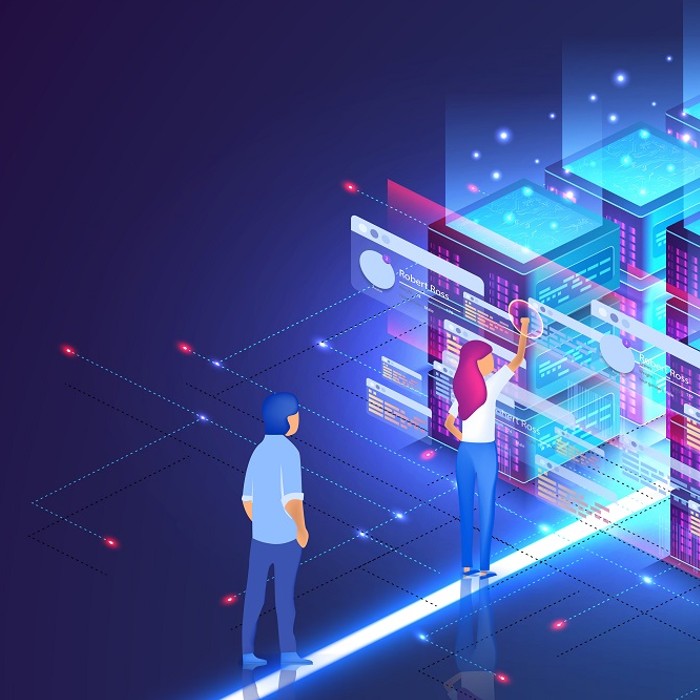Artificial intelligence already has changed the way humans and AI work together. Its next phase, however, is about to change it even more dramatically thanks to AI agents — systems that can sense their environment and access short-term memory, using tools and contextual information to complete tasks on their own or in collaboration with other systems and bots, without human intervention.
While the technology is still in its nascent stages, Deloitte predicts that half of the companies using generative AI today will launch agentic AI pilots or proofs of concept by 2027.
With a vast array of applications and use cases, AI agents are an exciting next chapter in the generative-AI era. To make the most of them, enterprises will need a strategic approach and an understanding mindset across their organization.
What Are AI Agents?
Jeremiah Owyang, a venture capitalist at Blitzscaling Ventures and co-founder of technology research firm Altimeter, said the rise of AI agents is the tech stack’s next evolution. At the bottom is data, which is critical for every organization. On top of that is AI infrastructure, followed by foundational models, visual models and large language models (LLMs). Above that are connected AI apps and, now, AI agents, which are dependent on LLMs.
“An AI agent is an application that can sense the world around it, make decisions on its own and complete actual tasks with execution,” Owyang said. “As they become more advanced, they operate in sequence — in combination with each other in concert, which is called agent crews, fleets, groups or swarms. In many cases, they are like low-level human employees.”
Owyang stressed that despite their autonomy, AI agents shouldn’t entirely replace LLMs. Instead, the two should work in tandem, with agents depending on LLMs.
“Think of large language models as your brain with all that knowledge and the things to do,” he said. “But the actual clicking and typing and doing the physical tasks — your limbs, appendages and body — are the AI agents. You need both in combination to be an effective ‘creature.’”
Benefits of AI Agents
AI agents can be advantageous to internal operations and external customers alike. Among the most promising benefits are:
More personalized experiences: AI agents can generate personalized, regulation-safe and compliant content. As a result, every customer can have their own unique experience when using a company’s website or app.
Improved customer care: Some companies already have AI software agents for basic customer care responses, which are trained on existing knowledge bases and CRM data. With AI agents handling busy work and simple support issues, humans can focus on delivering improved, tailored care for customers.
Administrative assistance: AI agents can act as junior assistants by pulling information across multiple apps, emails and data sources. For example, they could look at credit card receipts and fill out an expense report, create meeting summaries or build IT reporting decks by compiling disparate data into a single location.
Better collaboration: Expect videoconferencing tools to implement AI agents as if they were colleagues. During a meeting, these agents will not only be able to record calls, but also talk with participants, take notes, perform actions and generate diagrams or charts in real time.
Streamlined supply chains: AI agents already exist in Amazon warehouses and automobile manufacturing plants. In those places and other nodes in supply chains, AI agents can help with data analysis and integration, such as mapping product codes and converting measurement units.
Strategies for Implementing AI Agents
While AI agent implementation will differ from company to company, there are some general frameworks to consider, according to Owyang, who said AI agent implementation typically comes in three primary flavors:
AI agents can come in the form of traditional enterprise software that’s downloaded from a large player and installed on-premise, such as crewAI’s open-source software.
A large enterprise provider, such as Salesforce’s Agentforce, is another way to implement agents.
Many AI agent startups are browsers or extensions that connect with different apps, such as expense reports, CRM systems, PowerPoints and email.
When determining which choice is best, Owyang offered three rules for IT leaders to consider as they plan their AI agent strategies.
“First of all, get your data in order,” he said. “Two, figure out who your enterprise provider is — open-source or Big Tech. Three, do you need to enable the actual user? And what permissions do they need?”
Deloitte recommends identifying the tasks and workflows within your company that AI agents can execute, and to remove unnecessary steps that might get the agent off track.
“Ensure that agentic AI solutions have a clear goal, and access to the data, tools and systems they will require,” it wrote in a November 2024 article about AI agents.
Don’t be afraid to look outside your organization for inspiration, either, suggested Peter Wang, chief AI and innovation officer and co-founder of Anaconda. He takes a two-pronged approach to AI projects.
“I look at people documenting quite specifically about their successes, who’ve built something that works,” he said. “Then, I look at the simplest possible thing I could build that would work end-to-end for what I’m trying to accomplish. You have to have your eye on the sense of the thing you’re trying to build and as simply as possible.”
Owyang and Wang agreed: Limiting data access is essential, as is understanding how data are used and shared.
Likewise, IT teams must instill strong cybersecurity and data governance throughout the organization by partnering with trusted tools and solutions. For example, a framework like Javalin can help with quick projects. Anaconda’s AI Navigator will allow for agentic AI creation and distribution. And Nutanix’s AI solutions include support for AI agents and applications, giving IT teams a robust field of opportunities to find the agents that best fit their needs.
Measuring Agentic AI Results
Because of the nature of AI, what works great now may be obviated in a few months, Wang said. Consistent evaluation and reinforcement are therefore key to long-term success.
“Once you get something working, check on it every couple of months,” Wang advised. “Does it still perform better than this other new thing? Keep the prototype you get working because it’s a useful benchmark, and consider what you’re trading off for complexity in terms of performance.”
There are several ways to measure AI agent impact. For instance, an organization can look at its rate of completion and track the number of steps it took per task, or how many times a human had to intervene. More technical metrics might look toward latency and how often API calls are made. To maintain quality, consider the success rate of how well the AI agent follows instructions and creates the desired result.
AI agents can help streamline business operations and improve customer care, but there’s even more potential to unlock. In the years and decades ahead, these agents will serve as the foundation for further technological innovations.
“If AI agents can think and sense the world around you and conduct tasks, then the next phase is humanoid robotics or simple drones. They will use agent software,” concluded Owyang.
Joey Held is a writer and podcaster based in Austin, Texas. He’s the founder of Fun Fact Friyay and the author of Kind, But Kind of Weird: Short Stories on Life’s Relationships. Connect with him on LinkedIn or BlueSky.
© 2025 Nutanix, Inc. All rights reserved. For additional information and important legal disclaimers, please go here.


















